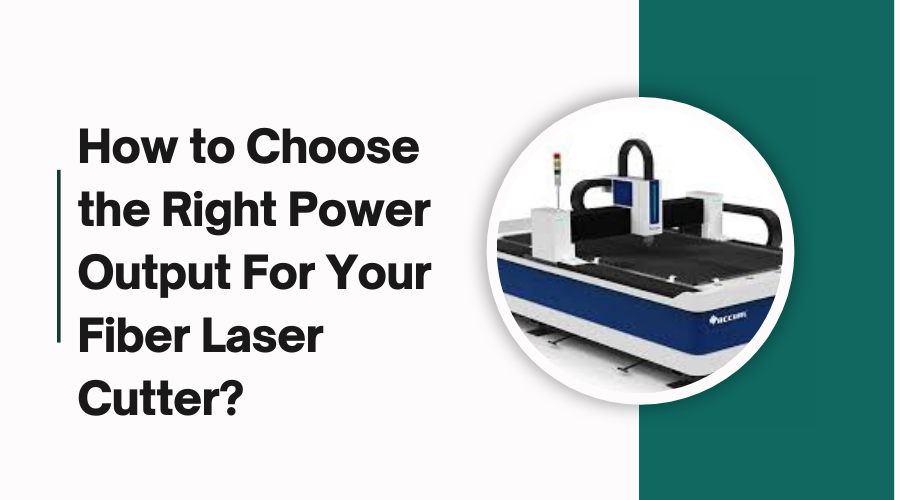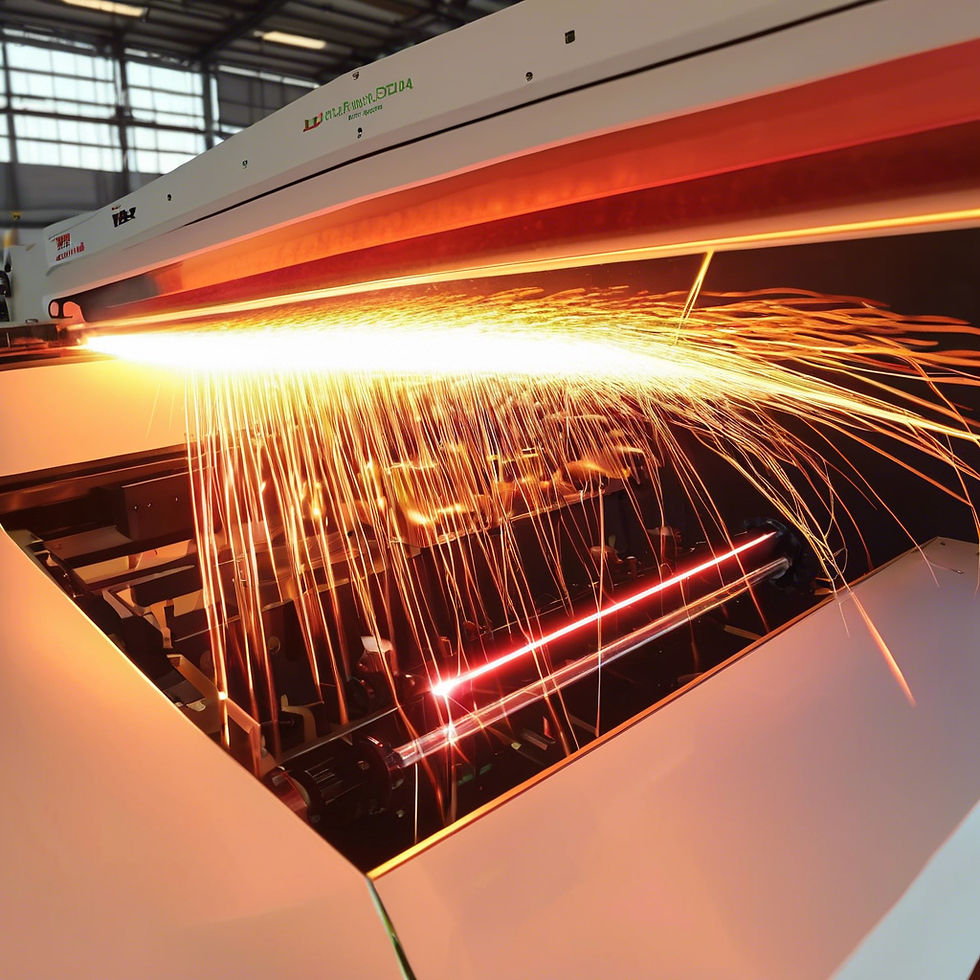How to Choose the Right Power Output For Your Fiber Laser Cutter?
- jinanhengcheng
- May 26
- 5 min read

When investing in a fiber laser cutter, one of the most critical decisions you'll make is choosing the right power output. Whether you're cutting stainless steel, aluminum, brass, or other metals, the power level directly impacts cutting speed, edge quality, and the types of materials you can process. If you're sourcing a Fiber laser machine in bulk for your manufacturing plant, job shop, or distribution business, understanding power ratings becomes even more important to match production goals and budget requirements.
This guide is designed to help you choose the ideal power output for your fiber laser cutter with confidence. Whether you're new to laser cutting or scaling up operations, we'll break down everything in a straightforward, conversational tone to make sure you get the best value and performance for your investment.
What Does "Power Output" Mean in Fiber Lasers?
Power output in fiber lasers refers to the amount of laser energy the machine delivers, typically measured in watts (W) or kilowatts (kW). Common options range from 500W to 20kW, though most small to mid-size shops operate within the 1kW to 6kW range.
The higher the wattage, the deeper and faster the machine can cut through metal. But higher power also means more energy use, a bigger initial investment, and sometimes more advanced cooling requirements.
Why Power Output Matters
Let's get one thing clear: power output is not a one-size-fits-all decision. Here's what it affects:
Cutting Speed: Higher wattage = faster cuts, especially for thick materials.
Material Thickness: Low-power lasers struggle with thick metals.
Edge Quality: Lower wattage may leave burrs or require post-processing on thicker materials.
Cost: Both upfront cost and long-term power consumption vary with wattage.
Choosing the wrong power output could either bottleneck your operations or lead to unnecessary expenses.
Common Power Ratings and Their Use Cases
Here's a quick breakdown of power levels and what they're typically used for:
500W – 1000W
Ideal for: Thin metals (carbon steel <6mm, stainless steel <3mm)
Use case: Low-volume or light-duty fabrication
Pros: Affordable, energy-efficient
Cons: Slow for thick materials, limited versatility
1kW – 2kW
Ideal for: Mid-range applications (carbon steel up to 12mm, stainless up to 6mm)
Use case: Small to medium businesses with moderate demand
Pros: Balanced speed and capability
Cons: May still require multiple passes on thicker metals
3kW – 6kW
Ideal for: Industrial cutting needs (carbon steel up to 20mm, stainless up to 12mm)
Pros: High productivity, wide material compatibility
Cons: Higher energy consumption
8kW – 20kW
Ideal for: Heavy-duty manufacturing, high-volume processing
Use case: Aerospace, automotive, and mass production sectors
Pros: Cuts thick metals cleanly in one pass, extremely fast
Cons: Expensive, requires advanced support systems
Key Questions to Ask Before Deciding
To help narrow down your options, consider these questions:
What materials will you cut most frequently?
Cutting stainless steel and aluminum requires more power than mild steel, especially at thicker gauges.
How thick are the materials?
If you frequently cut metals over 10mm thick, a machine under 1kW will likely struggle.
What's your production volume?
A high-throughput operation will benefit from faster, higher-powered lasers, even if they cost more upfront.
What is your budget?
Higher wattage means a higher price—not just for the machine, but for cooling systems, electricity, and possibly maintenance.
Do you need versatility?
A mid-range machine (2kW–4kW) offers a balance between power, speed, and cost, making it ideal for shops cutting a variety of metals and thicknesses.
Additional Factors to Consider Beyond Wattage
While wattage is important, it's not everything. Here are other specs to watch:
Beam Quality
A laser's beam quality affects how precisely it can cut or engrave. Higher beam quality = cleaner edges and better detail.
Cutting Head Technology
Look for features like auto-focus, collision detection, and nozzle height adjustment for improved cutting efficiency.
Cooling System
More powerful lasers generate more heat. Make sure the machine comes with an adequate water-cooling system to prevent overheating.
Software & Controls
Modern fiber lasers come with smart interfaces, nesting software, and real-time monitoring. These can make a big difference in productivity and ease of use.
Mistakes to Avoid When Choosing Power Output
Many buyers make the mistake of simply going for the highest power available, assuming it's the best. That's not always true. Avoid these common pitfalls:
Overbuying: Paying for more wattage than you need leads to wasted investment and higher energy bills.
Underbuying: Trying to cut thick or reflective materials with low power will frustrate your team and slow down operations.
Ignoring your workflow: Your laser cutter should match your production speed, material type, and job complexity.
Neglecting future growth: Choose a power level that can scale with your business if you expect higher volumes later on.
When to Consider Buying Fiber Laser Machines in Bulk
If you're outfitting an entire shop, multiple factories, or setting up a laser-based production line, buying fiber laser machines in bulk makes financial and logistical sense. Bulk buying provides:
Lower per-unit costs
Simplified maintenance routines
Standardized training and processes
Easier integration into smart factory setups
Make sure to partner with a reputable manufacturer or supplier that offers after-sales support, installation services, and customization options for large orders.
Conclusion
Choosing the right power output for your fiber laser cutter is about finding the perfect balance between capability and cost-efficiency. Your ideal wattage depends on the materials you use, the thickness you cut, and the pace of your operations. Don't fall into the trap of simply picking the most powerful option—focus instead on what aligns with your specific needs today and in the future.
By understanding how different power levels perform, and by factoring in additional elements like cooling systems, beam quality, and software, you'll make a smarter investment that brings long-term returns. And if you're buying on a larger scale, be sure to explore bulk options to reduce costs and streamline your setup.
FAQs
Q1: Can I upgrade the power output of my fiber laser later?
In most cases, no. Power output is a hardware feature. If you think you'll need more power in the future, it's smarter to choose a slightly higher wattage from the beginning.
Q2: Is higher power always better?
Not necessarily. Higher power means faster cuts, but also higher costs and energy use. You may not need it for thin or soft materials.
Q3: What is the best power range for beginners?
If you're new and starting with basic metals, a 1kW to 2kW fiber laser offers a good balance of performance and affordability.
Q4: What happens if I use low power on thick metal?
You may experience slower cuts, poor edge quality, and even incomplete penetration—leading to inefficiency and extra work.
Q5: Can I cut non-metal materials with a fiber laser?
Fiber lasers are best suited for metals. For non-metals like wood or acrylic, CO₂ lasers are typically more effective.



Commentaires